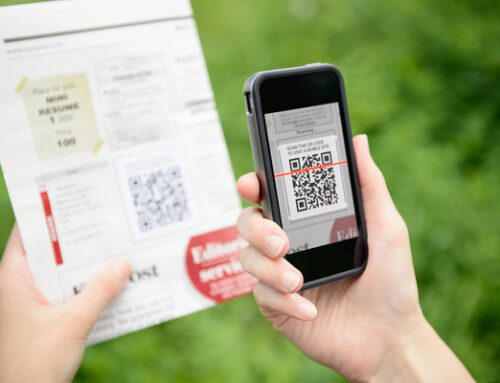 Modern media is constantly highlighting prominent issues, and it can feel like nonprofits that address those issues are always asking for support. Consider how your nonprofit can take advantage of the online space to spread awareness of your cause, reach the right audiences, and stand out among world issues and constant corporate marketing messaging.
Modern media is constantly highlighting prominent issues, and it can feel like nonprofits that address those issues are always asking for support. Consider how your nonprofit can take advantage of the online space to spread awareness of your cause, reach the right audiences, and stand out among world issues and constant corporate marketing messaging.
With the prevalence of digital tools and solutions in the industry, it’s up to you to brainstorm the best ways to increase fundraising revenue while engaging your donors in meaningful ways. For instance, many nonprofits and other charitable organizations are beginning to host dedicated campaigns on social media.
Studies from PewResearch show around seven in ten Americans depend on social media to connect with others and engage with current happenings. This is why social media is a great way to meet potential donors, keep your supporters updated, and make it easier for donors to connect with each other.
Peer-to-peer fundraising (P2P) is a popular social fundraising method that can easily be leveraged to supplement any of your nonprofit’s existing efforts.
Hosted on various social media platforms, P2P campaigns start by recruiting a group of volunteers to fundraise on your behalf. Each volunteer has their own donation page they use to appeal for donations from their personal network on their social media accounts. This is an effective way to increase your visibility and spread the word about your mission to your community.
Not convinced? Consider the following reasons peer-to-peer fundraising should be your next move. You can use peer-to-peer fundraising to:
- Further develop current donor relationships.
- Empower supporters with a personalized peer-to-peer page.
- Motivate fundraising with gamification elements.
- Use peer-to-peer methods to supplement other fundraising efforts.
According to Qgiv, it’s important that your nonprofit hosts your campaign on a capable P2P platform. The right solution will equip your team and group of volunteers with the best tools for success. Let’s get started!

Further develop current donor relationships.
As you start planning your peer-to-peer campaign, think about your fundraising volunteers. Begin your P2P fundraiser by recruiting volunteers from past donors and current supporters. Send out a call to action through email or post it on your nonprofit’s social media channels.
When you engage supporters in a P2P campaign, they feel more connected to your mission than ever before.
It’s well-known in the fundraising world that retaining your donors is more cost-efficient than acquiring new ones. Without sustained donor retention, nonprofits can’t grow or make meaningful changes to their cause. They’re too busy exhausting their donor acquisition strategies and budgets.
One way to reduce the risk of churn and keep donors coming back is to further develop those relationships with increased engagement efforts. This means sending out more non-ask communications, keeping them updated on how their gift has made an impact, and giving back with event ticket discounts.
 Recruiting past donors to support your campaign not only makes your fundraising plan more likely to succeed, but it also gets those donors even more closely connected to your cause. It encourages donors to invest even more deeply in your work and makes them more likely to continue their relationship with your organization.
Recruiting past donors to support your campaign not only makes your fundraising plan more likely to succeed, but it also gets those donors even more closely connected to your cause. It encourages donors to invest even more deeply in your work and makes them more likely to continue their relationship with your organization.
After you’ve initially reached out to past donors, another tip is to recruit your Millenial and Generation Z supporters to participate in your peer-to-peer campaign. Though they might not have the funds to become big donors themselves, they are usually some of the most socially active and tech-savvy volunteers you can have. Raising money for your cause helps them make a big impact without making a huge gift

Empower supporters with a personalized peer-to-peer fundraising page.
Participating in a peer-to-peer campaign should be rewarding for your supporters. It’s a chance for them to share why they’re passionate about your work and to make a genuine impact on the world! Give your supporters the tools they need to spread the word about the cause they love.
With the right P2P platform, you can equip each of your fundraising volunteers with a customizable fundraising page. This is the space where your volunteers tell the stories behind their connection to your organization and share your cause with their family and friends. Make sure your P2P pages have these top features:
Providing your volunteers with their own P2P page is a great way to increase fundraising. Participants are more likely to share a page if they’ve spent the time to share their stories and photos. More sharing means more potential readers who could become donors!
Your call to action resonates more with this audience because they’re familiar with your volunteers. It’s more likely that new donors will give to your cause when there is that personal connection.

Motivate fundraising with gamification elements.
You can easily boost fundraising with gamification elements. Your volunteers are raising money for your cause primarily because they’re invested in your work, but adding come competitive elements can take their involvement to the next level.
Some P2P fundraising platforms encourage healthy competition with gamification tools. They’re a great way to keep participants engaged in the fundraising process after the initial excitement has worn off. Take a look at your P2P tools and see if you have these capabilities:
- Reward participants with incentives. Consider offering incentives to participants who reach their fundraising goal (and who hit fundraising milestones along the way). These can include intangible items like social media shoutouts, public displays of appreciation, or digital badges. You could also try offering items like raffle tickets, trophies, medals, and other prizes to your top performers!
- Display a participant leaderboard to publicize who your top fundraisers are. Encourage competition with leaderboards! Your more competitive participants will work even harder to make it to the top.
- Showcase a fundraising thermometer on your main website and popular social media platforms like Facebook. Participants and donors alike will love watching momentum build as you edge closer to your fundraising goal.
Setting up a P2P campaign is one thing. Making it successful is something else entirely! There are a couple of steps you can take to make the most of your participants’ efforts. Review your existing P2P management tools and consider how you can use gamification elements to help you reach your fundraising goal.

Use peer-to-peer methods to supplement other fundraising efforts.
Adding a peer-to-peer element to campaigns you may already be running is also an option.
This is an especially great option for live events. Many nonprofits and other charitable organizations will host P2P campaigns to build excitement, increase support, and raise attendance for another event.
It’s likely that you host various events throughout the year. Fundraising events are one of the best ways to engage supporters and highlight your nonprofit’s impact! Some common events that could benefit from a P2P component are:
- A-thon fundraisers. Whether it’s a walk-a-thon, a run-a-thon, or knit-a-thon, participants in these types of events raise money by collecting pledged donations. A good way to increase fundraising even more is to empower your a-thon participants with P2P tools. This can help you increase pledges and also get supporters excited about the big day. If this interests you, check out 99Pledge’s guide to planning a walk-a-thon.
- Volunteer fundraising events.If you’re hosting a volunteer event, ask those volunteers to participate in an accompanying P2P campaign. You already know that these people support your cause and have a connection with your organization. If you often host volunteer events, read this article on volunteer management for tips on keeping them engaged.
Encourage volunteers to share their own unique P2P page during the weeks leading up to the event. It will further engage your volunteers and can connect them more closely to your cause, and it can provide a much-needed revenue source, too!
A great peer-to-peer platform can help you spread the word about your nonprofit’s mission, raise money for your cause, and connect with new donors and participants. It’s a valuable fundraising method that’s growing in popularity. If you haven’t explored peer-to-peer fundraising as an option for your nonprofit, we hope this article convinces you to do so!
Additional resource:
My Renosi gives some really great advice and lays out 10 tips in their article: “Peer to Peer Fundraising: How to Do it Right”.
Author: Abby Jarvis
 Abby Jarvis is a blogger, marketer, and communications coordinator for Qgiv, an online fundraising service provider. Qgiv offers industry-leading online giving and peer to peer fundraising tools for nonprofit, faith-based, and political organizations of all sizes. When she’s not working at Qgiv, Abby can usually be found writing for local magazines, catching up on her favorite blogs, or binge-watching sci-fi shows on Netflix.
Abby Jarvis is a blogger, marketer, and communications coordinator for Qgiv, an online fundraising service provider. Qgiv offers industry-leading online giving and peer to peer fundraising tools for nonprofit, faith-based, and political organizations of all sizes. When she’s not working at Qgiv, Abby can usually be found writing for local magazines, catching up on her favorite blogs, or binge-watching sci-fi shows on Netflix.






Leave A Comment